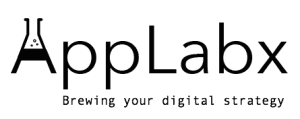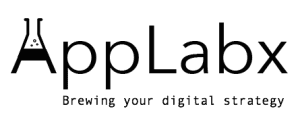Key Takeaways
- Choose platforms based on your business model—e-commerce, SaaS, courses, or marketplaces—for maximum growth.
- Prioritize SEO, scalability, and automation features to future-proof your online business in 2025.
- Leverage AI-powered tools, mobile-first design, and subscription models to stay competitive and drive revenue.
The digital landscape is evolving faster than ever, and 2025 is shaping up to be a pivotal year for entrepreneurs looking to launch successful online businesses. With advancements in technology, artificial intelligence, and mobile-first user experiences, starting an online business is no longer limited to tech experts or large corporations. Today, anyone with a viable idea and the right platform can build a thriving digital business from virtually anywhere in the world.

Whether you are an aspiring entrepreneur, a freelancer aiming to scale, or a traditional business owner transitioning online, choosing the right platform is one of the most critical decisions you will make. Your chosen platform directly influences everything — from how easily you can set up your website to how effectively you reach customers, manage operations, optimize for search engines, and scale your growth.
In 2025, the competition is more intense, customer expectations are higher, and search engines favor websites and stores that load faster, offer seamless mobile experiences, and integrate with AI-driven tools. This makes selecting a platform that aligns with your goals not just a preference but a necessity for survival and success in the modern digital economy.
The Growing Importance of the Right Platform in 2025
The concept of “online business” has expanded dramatically. It’s no longer just about setting up an e-commerce store or a basic website. Entrepreneurs are building niche content sites, subscription-based communities, SaaS products, online courses, and marketplaces catering to global audiences. Each business model requires a platform with specific functionalities — be it advanced SEO features, no-code integrations, built-in marketing tools, AI automation, or scalable hosting solutions.
In fact, according to recent trends, platforms that offer seamless integration with AI tools, mobile responsiveness, and omnichannel sales capabilities are outperforming those that rely on traditional web frameworks. Consumers in 2025 expect instant load times, personalized shopping experiences, secure payment gateways, and interactive elements — all of which depend on the technical strength of the platform you choose.
The Problem: Too Many Options, Too Little Clarity
One of the major challenges entrepreneurs face today is the overwhelming number of platform choices available. From popular website builders like Wix, Squarespace, and WordPress, to robust e-commerce solutions such as Shopify, BigCommerce, and WooCommerce, to course hosting platforms like Teachable and Kajabi, the decision-making process can quickly become confusing.
Adding to this complexity are emerging no-code app builders like Bubble, Webflow, and Softr, which empower users to build SaaS platforms or interactive web applications without writing a single line of code. Then there are marketplace platforms like Amazon, Etsy, and TikTok Shop, which let you leverage existing audiences but come with their own sets of rules, fees, and limitations.
What This Guide Will Help You Achieve
This comprehensive guide is designed to help you navigate the crowded landscape of online business platforms in 2025. Whether your goal is to launch a product-based e-commerce store, create a service-based website, build an online course, develop a SaaS product, or start selling through marketplaces, this blog will break down the best platforms suited for each business model.
You will learn:
- The top-performing platforms in 2025 based on features, ease of use, scalability, pricing, and SEO capabilities.
- Detailed comparisons of leading platforms including their pros, cons, and ideal use cases.
- How the latest trends — such as AI integration, mobile-first design, and social commerce — are influencing platform choices.
- Which platforms are best for beginners, solo entrepreneurs, agencies, and rapidly growing businesses.
- Actionable insights to help you match your business goals with the right technology stack.
Why SEO, Scalability, and AI Readiness Matter More Than Ever
Google’s evolving algorithms now heavily favor websites and online stores that are optimized for speed, user experience, and technical SEO. Moreover, platforms that offer AI-powered features such as automated customer support, personalized recommendations, predictive analytics, and smart inventory management can give businesses a massive competitive edge.
Failing to choose a future-proof platform can result in:
- Poor SEO rankings
- Slow website load times
- Higher customer bounce rates
- Limited scalability
- Increased operational costs due to third-party tool reliance
This blog is more than just a list of tools — it’s a strategic guide that takes into account the technological trends and consumer behavior shifts that will define online business success in 2025.
Your Roadmap to Online Success Starts Here
Whether you are building a small personal brand, launching a global e-commerce empire, or starting a niche SaaS product, the right platform is your foundation. The good news is that today’s platforms are more powerful, accessible, and customizable than ever before. The key is knowing which one aligns with your business model, budget, and growth goals.
By the end of this guide, you will have a clear understanding of which platforms can help you launch, grow, and scale your online business in 2025 — all while maximizing your SEO performance, automating workflows, and delivering exceptional customer experiences.
Let’s dive into the best platforms to start your online business in 2025.
But, before we venture further, we like to share who we are and what we do.
About AppLabx
From developing a solid marketing plan to creating compelling content, optimizing for search engines, leveraging social media, and utilizing paid advertising, AppLabx offers a comprehensive suite of digital marketing services designed to drive growth and profitability for your business.
AppLabx is well known for helping companies and startups create online businesses.
At AppLabx, we understand that no two businesses are alike. That’s why we take a personalized approach to every project, working closely with our clients to understand their unique needs and goals, and developing customized strategies to help them achieve success.
If you need a digital consultation, then send in an inquiry here.
The Best Platforms to Start Your Online Business in 2025
- Why Choosing the Right Platform Matters in 2025
- Types of Online Business Platforms
- Best E-commerce Platforms in 2025
- Best Website Builders for Service-Based Businesses
- Best Marketplace Platforms to Start Selling in 2025
- Best Platforms for Online Courses & Memberships
- Best Platforms for SaaS and App Businesses
- Comparison Matrix of Top Platforms by Business Type
- Key Factors to Consider Before Choosing a Platform
- Trends Shaping Online Business Platforms in 2025
1. Why Choosing the Right Platform Matters in 2025
Selecting the right platform for your online business in 2025 is more critical than ever before. With evolving consumer behaviors, changing search engine algorithms, and rapid technological advancements, your platform choice will directly influence your business growth, SEO performance, operational efficiency, and long-term scalability.
Impact on Business Scalability and Growth
Choosing the wrong platform can limit your ability to grow, while the right one enables seamless scaling.
Key Factors Influencing Scalability:
- Server Infrastructure
- Platforms like Shopify Plus and BigCommerce Enterprise offer robust hosting solutions.
- Self-hosted platforms like WooCommerce depend on your hosting provider.
- Traffic Handling Capacity
- Enterprise platforms can handle sudden traffic spikes.
- Low-tier website builders may slow down or crash during high-traffic events.
- Product and Content Expansion
- Platforms like WordPress allow unlimited content publishing.
- Shopify limits the number of product variants unless you upgrade to higher plans.
| Platform Type | Scalability Level | Example Platforms | Best For |
|---|---|---|---|
| SaaS E-commerce | High | Shopify Plus, BigCommerce | Growing online stores |
| Open-Source | Medium to High | WooCommerce, Magento | Tech-savvy users |
| Website Builders | Low to Medium | Wix, Squarespace | Small businesses |
Influence on SEO Performance
SEO is a non-negotiable success factor in 2025. Your platform choice plays a vital role in your website’s ability to rank on Google and other search engines.
SEO Features to Look for:
- URL Structure Customization
- WordPress allows full control over URLs.
- Shopify has limited URL customization options.
- Mobile Optimization
- Webflow and Wix now offer built-in mobile responsiveness.
- Older platforms may require manual adjustments.
- Site Speed and Core Web Vitals
- Google prioritizes fast-loading websites.
- Shopify and Webflow score well in speed tests.
- Built-in SEO Tools
- Squarespace offers on-page SEO settings.
- WordPress with Yoast SEO plugin provides advanced SEO control.
| SEO Factor | High SEO Platforms | Moderate SEO Platforms | Low SEO Platforms |
|---|---|---|---|
| URL Customization | WordPress, Webflow | Shopify, Wix | GoDaddy Builder |
| Mobile Responsiveness | Webflow, Wix, Shopify | Squarespace | Older DIY builders |
| Page Speed Optimization | Webflow, Shopify | WooCommerce (depends on host) | Wix |
| SEO Plugin Support | WordPress (Yoast, Rank Math) | Shopify, Wix | Limited on basic platforms |
Cost Efficiency and Total Ownership Costs
Platform costs go beyond subscription fees. They include themes, plugins, transaction fees, and third-party integrations.
Hidden Costs to Consider:
- Transaction Fees
- Shopify charges transaction fees unless using Shopify Payments.
- WooCommerce has no per-sale fees but requires separate payment gateways.
- Third-Party Apps
- Platforms like Shopify rely on app store plugins, increasing monthly costs.
- WordPress offers many free or one-time payment plugins.
- Hosting and Security
- SaaS platforms like BigCommerce include hosting and SSL.
- Self-hosted platforms like WooCommerce require you to manage hosting and security.
| Cost Element | Included in SaaS Platforms | Required Separately for Open-Source |
|---|---|---|
| Hosting | Yes | No |
| SSL Certificate | Yes | No |
| Security Updates | Automatic | Manual |
| Plugins & Apps | Mostly Paid | Many Free Options |
| Transaction Fees | Often Yes | Depends on Payment Gateway |
Ease of Use for Beginners vs. Advanced Users
User experience in platform management is crucial, especially for non-technical entrepreneurs.
Platform Learning Curve Comparison:
- Beginner-Friendly Platforms
- Wix, Squarespace, and Shopify offer drag-and-drop interfaces.
- Intermediate Users
- WooCommerce and BigCommerce require some technical setup.
- Advanced Users
- Magento, Webflow, and custom-coded sites offer deep customization but require technical expertise.
| User Level | Recommended Platforms | Customization Level | Technical Skills Needed |
|---|---|---|---|
| Beginner | Wix, Shopify, Squarespace | Low | Minimal |
| Intermediate | WooCommerce, BigCommerce | Moderate | Medium |
| Advanced | Webflow, Magento | High | High |
Integration with AI and Automation Tools
In 2025, platforms that offer AI-powered features and automation will dominate the online business landscape.
Features to Look for:
- AI Chatbots
- Shopify now offers integrated AI chat solutions.
- WordPress can integrate with AI tools like Tidio and ChatGPT-based plugins.
- Automated Marketing
- BigCommerce and Kajabi offer built-in marketing automation.
- Webflow connects easily with Zapier for workflow automations.
- AI-driven Personalization
- E-commerce platforms like Shopify Plus provide AI-generated product recommendations.
| AI & Automation Features | Available on Platforms |
|---|---|
| AI Chatbots | Shopify, WordPress (via plugins), Wix |
| Marketing Automation | BigCommerce, Kajabi, Shopify |
| Personalized Recommendations | Shopify Plus, BigCommerce |
| Workflow Automation | Webflow (via Zapier), WooCommerce |
Mobile-First Design and Responsiveness
With mobile commerce surpassing desktop usage, mobile optimization is essential.
Mobile Optimization Metrics:
- Responsive Design Templates
- Wix, Webflow, and Squarespace offer mobile-optimized themes.
- Mobile Checkout Experience
- Shopify and BigCommerce have highly optimized checkout flows.
- Mobile Site Speed
- Webflow excels in delivering fast mobile experiences.
| Mobile Optimization Factor | Best Performing Platforms |
|---|---|
| Mobile-Responsive Themes | Webflow, Wix, Squarespace |
| Fast Mobile Checkout | Shopify, BigCommerce |
| Mobile Page Speed | Webflow, Shopify |
Integration with Social Commerce and Multi-Channel Selling
In 2025, businesses that sell across multiple platforms like Instagram, Facebook, TikTok, and Amazon gain significant market share.
Multi-Channel Selling Capabilities:
- Built-in Social Commerce Integration
- Shopify and BigCommerce connect directly to Instagram and Facebook Shops.
- Marketplace Integration
- Shopify, BigCommerce, and WooCommerce offer Amazon and eBay integration.
- Emerging Platforms
- TikTok Shop now integrates directly with Shopify for in-app shopping experiences.
| Sales Channel | Supported Platforms |
|---|---|
| Instagram & Facebook Shops | Shopify, BigCommerce, Wix |
| Amazon & eBay | Shopify, WooCommerce, BigCommerce |
| TikTok Shop | Shopify |
Conclusion: Making a Future-Proof Platform Choice
In 2025, your choice of platform is not just about launching quickly. It’s about long-term success, SEO readiness, scalability, cost control, and adaptability to new digital trends like AI, automation, and social commerce.
By carefully evaluating your business model, budget, technical skills, and growth goals, you can select a platform that provides the right mix of flexibility, performance, and future scalability.
2. Types of Online Business Platforms
Understanding the different types of online business platforms is crucial for selecting the right foundation for your venture in 2025. Each platform type caters to specific business models, target audiences, and growth trajectories. Whether you’re selling products, offering services, delivering digital content, or launching a SaaS application, knowing the categories will help you make an informed decision.
E-commerce Platforms
E-commerce platforms are designed for selling physical and digital products directly to consumers through branded online stores.
Key Features:
- Shopping cart functionality
- Payment gateway integrations
- Inventory management
- Mobile-optimized storefronts
- SEO-friendly URL structures
- AI-driven product recommendations
Top E-commerce Platforms in 2025:
- Shopify – Best for beginners to enterprises with robust app integrations.
- WooCommerce – Ideal for WordPress users wanting full control.
- BigCommerce – Suited for scalability and enterprise-grade solutions.
- Squarespace Commerce – Perfect for creative businesses needing e-commerce capabilities.
- Wix eCommerce – User-friendly for small to medium-sized stores.
| Platform | Ease of Use | SEO Capability | Scalability | Best For |
|---|---|---|---|---|
| Shopify | High | High | High | General e-commerce |
| WooCommerce | Moderate | Very High | High | WordPress-based businesses |
| BigCommerce | High | High | Very High | Large or growing online stores |
| Squarespace | Very High | Medium | Medium | Designers, creatives, small biz |
| Wix eCommerce | Very High | Medium | Medium | Beginners, small shops |
Website Builders for Service-Based Businesses
These platforms focus on creating websites for consultants, freelancers, agencies, and service providers.
Key Features:
- Drag-and-drop editors
- Booking and appointment systems
- SEO optimization tools
- Mobile-responsive designs
- Blog integration for content marketing
Popular Website Builders in 2025:
- Wix – Simplifies website creation with hundreds of templates.
- Squarespace – Known for design elegance and easy setup.
- Webflow – Offers advanced design capabilities with no-code flexibility.
- WordPress with Elementor – Provides full customization for developers and designers.
- GoDaddy Website Builder – Basic, quick setups for small service businesses.
| Platform | Ease of Use | Design Flexibility | SEO Strength | Best For |
|---|---|---|---|---|
| Wix | Very High | High | Medium | Small businesses, freelancers |
| Squarespace | Very High | Very High | Medium | Creatives, consultants |
| Webflow | Moderate | Extremely High | Very High | Agencies, advanced users |
| WordPress + Elementor | Moderate | Extremely High | Very High | Custom websites, service providers |
| GoDaddy Builder | Very High | Low | Low | Simple, fast websites |
Marketplace Platforms
Marketplace platforms allow businesses to sell products without managing a standalone website, leveraging the traffic and trust of established ecosystems.
Key Features:
- Built-in customer base
- Payment processing handled by the platform
- Integrated shipping and logistics support
- Exposure to millions of potential customers
- Simplified SEO within platform guidelines
Top Marketplace Platforms in 2025:
- Amazon – Ideal for mass-market products and FBA logistics.
- eBay – Best for auctions, used, and rare items.
- Etsy – Focused on handmade, vintage, and creative products.
- TikTok Shop – Rising leader in social commerce.
- Facebook Marketplace – Local selling made easy with social integration.
| Marketplace | Audience Size | Product Type Focus | Fee Structure | Best For |
|---|---|---|---|---|
| Amazon | Very High | All products, retail | Commission + FBA | High-volume sellers |
| eBay | High | Auctions, second-hand | Commission | Collectibles, used goods |
| Etsy | High | Handmade, creative | Listing + Commission | Artisans, crafters |
| TikTok Shop | Growing Rapidly | Trending, social-driven | Low Commission | Influencers, impulse products |
| Facebook Marketplace | High | Local, general products | Free or low fees | Local sellers, general goods |
Online Course & Membership Platforms
These platforms are designed for educators, coaches, influencers, and creators offering courses, workshops, or membership communities.
Key Features:
- Course creation tools
- Membership site capabilities
- Video hosting and content protection
- Payment gateways
- Drip content and student progress tracking
- AI-driven student recommendations
Leading Course Platforms in 2025:
- Teachable – User-friendly for solo educators.
- Thinkific – Comprehensive tools with customizable course structures.
- Kajabi – All-in-one platform including email marketing, websites, and courses.
- Podia – Simple and affordable for small creators.
- Mighty Networks – Combines course creation with community features.
| Platform | Ease of Use | Best Feature | Price Range | Best For |
|---|---|---|---|---|
| Teachable | Very High | Ease of setup | $$ | Solo creators, beginners |
| Thinkific | High | Customizable course options | $$ | Coaches, educators |
| Kajabi | High | All-in-one business tools | $$$ | Businesses scaling online |
| Podia | Very High | Simplicity & affordability | $-$$ | Small course creators |
| Mighty Networks | High | Community + courses | $$ | Creators with interactive communities |
SaaS & No-Code App Platforms
These platforms empower users to create Software as a Service (SaaS) products, web apps, or internal tools without extensive coding.
Key Features:
- Visual no-code development
- Database management
- User authentication and memberships
- Payment processing
- API integrations
- AI-enabled functionalities
Top No-Code Platforms for SaaS in 2025:
- Bubble – Full-stack no-code app development.
- Glide – Builds apps from Google Sheets or Airtable.
- Softr – Turns Airtable/Google Sheets into websites and apps.
- AppGyver – Enterprise-grade no-code for complex applications.
- Webflow + Memberstack + Zapier – Combines for membership sites and SaaS MVPs.
| Platform | Development Complexity | Best Use Case | Price Range | Scalability |
|---|---|---|---|---|
| Bubble | Moderate | SaaS apps, marketplaces | Free-$$$ | High |
| Glide | Low | Mobile apps, directories | Free-$$ | Medium |
| Softr | Low | Web apps, portals | Free-$$ | Medium |
| AppGyver | High | Enterprise-grade apps | Free-$$$ | Very High |
| Webflow + Memberstack + Zapier | Moderate | SaaS MVPs, memberships | Free-$$$ | High |
Comparison Matrix of Platform Types by Business Model
| Business Type | Best Platform Types | Complexity | Scalability | Cost Range |
|---|---|---|---|---|
| E-commerce | Shopify, WooCommerce, BigCommerce | Medium | High | $$-$$$ |
| Service-Based | Wix, Squarespace, Webflow | Low | Medium | $-$$ |
| Marketplaces | Amazon, Etsy, TikTok Shop | Low | Very High | Pay-per-sale |
| Online Courses | Kajabi, Teachable, Thinkific | Low-Medium | High | $$-$$$ |
| SaaS/App Development | Bubble, Glide, AppGyver, Webflow | Medium-High | High | Free-$$$ |
Conclusion: Understanding Platform Types for Strategic Success
In 2025, selecting the right type of online business platform is a pivotal decision that affects every aspect of your operations — from your customer experience to SEO performance, marketing reach, and revenue scalability. Whether you’re selling products, offering services, building digital communities, or launching software solutions, aligning your business goals with the correct platform category ensures efficiency, growth, and long-term success.
3. Best E-commerce Platforms in 2025
Choosing the right e-commerce platform in 2025 is a crucial decision that will directly impact your store’s success, scalability, SEO performance, customer experience, and revenue growth. The e-commerce landscape has evolved with the integration of AI, mobile-first design, and automation tools, offering businesses more options than ever before.
This section explores the best e-commerce platforms available in 2025, highlighting their strengths, weaknesses, pricing, and suitability for different business types.
Top E-commerce Platforms in 2025
1. Shopify
Overview:
- Cloud-based SaaS platform
- Known for ease of use and quick setup
- Offers robust app marketplace and scalability
Key Features:
- AI-powered product recommendations
- Built-in marketing tools (email, automation)
- POS (Point of Sale) for omnichannel retail
- Supports multi-currency and global selling
- App store with over 8,000 integrations
Pros:
- Beginner-friendly interface
- Reliable hosting with 99.99% uptime
- Excellent customer support
- Mobile-optimized themes
Cons:
- Limited URL structure customization (affects SEO)
- Dependence on paid apps increases overall costs
- Transaction fees if not using Shopify Payments
| Feature | Rating |
|---|---|
| Ease of Use | 9/10 |
| SEO Capabilities | 8/10 |
| Scalability | 9/10 |
| Cost Efficiency | 7/10 |
| AI & Automation | 9/10 |
2. WooCommerce (with WordPress)
Overview:
- Open-source e-commerce plugin for WordPress
- Fully customizable and self-hosted
Key Features:
- Complete control over SEO, design, and functionality
- Large plugin ecosystem (free and premium)
- Integrates with AI tools and automation services
- No platform-imposed transaction fees
- Supports digital and physical products
Pros:
- Highly customizable with full ownership
- No subscription fees (apart from hosting)
- Best-in-class SEO capabilities
- Vast global WordPress community
Cons:
- Requires technical setup and maintenance
- Dependence on third-party hosting for performance
- Security and updates are user responsibilities
| Feature | Rating |
|---|---|
| Ease of Use | 6/10 |
| SEO Capabilities | 10/10 |
| Scalability | 9/10 |
| Cost Efficiency | 8/10 |
| AI & Automation | 7/10 |
3. BigCommerce
Overview:
- Enterprise-grade SaaS e-commerce platform
- Designed for fast-growing and large businesses
Key Features:
- No transaction fees regardless of payment gateway
- Built-in SEO enhancements (custom URLs, microdata)
- Supports B2B and wholesale features natively
- Multi-storefront management from one dashboard
- API-driven for extensive integrations
Pros:
- Highly scalable for large catalogs and traffic spikes
- Robust native SEO capabilities
- Handles international sales with ease
- Enterprise-level security and reliability
Cons:
- Learning curve steeper than Shopify
- Fewer theme options than competitors
- Pricing increases based on revenue thresholds
| Feature | Rating |
|---|---|
| Ease of Use | 7/10 |
| SEO Capabilities | 9/10 |
| Scalability | 10/10 |
| Cost Efficiency | 8/10 |
| AI & Automation | 8/10 |
4. Wix eCommerce
Overview:
- Drag-and-drop website builder with e-commerce functionality
- Best for small to medium-sized businesses
Key Features:
- AI-driven Wix ADI (Artificial Design Intelligence)
- Integrated email marketing and social selling
- App Market for added functionalities
- Mobile-optimized templates
- Abandoned cart recovery tools
Pros:
- Extremely user-friendly
- Affordable pricing for startups
- Built-in marketing tools
- Quick setup with modern templates
Cons:
- Limited scalability for large businesses
- SEO capabilities not as strong as WooCommerce or BigCommerce
- Reliance on Wix’s closed ecosystem
| Feature | Rating |
|---|---|
| Ease of Use | 10/10 |
| SEO Capabilities | 7/10 |
| Scalability | 6/10 |
| Cost Efficiency | 9/10 |
| AI & Automation | 7/10 |
5. Squarespace Commerce
Overview:
- Renowned for beautiful design and simplicity
- Combines website building with e-commerce functionality
Key Features:
- Award-winning design templates
- Built-in email campaigns and SEO tools
- Supports subscriptions and digital product sales
- Mobile-optimized with integrated checkout
- Inventory, tax, and shipping management
Pros:
- Stunning, design-forward websites
- Easy for beginners and creatives
- Transparent, flat-rate pricing
- No need for third-party apps in most cases
Cons:
- Limited e-commerce features for complex stores
- Fewer payment options compared to Shopify
- Limited scalability for high-growth businesses
| Feature | Rating |
|---|---|
| Ease of Use | 9/10 |
| SEO Capabilities | 7/10 |
| Scalability | 6/10 |
| Cost Efficiency | 8/10 |
| AI & Automation | 6/10 |
E-commerce Platform Comparison Matrix (2025)
| Platform | Ease of Use | SEO Strength | Scalability | AI/Automation | Best For |
|---|---|---|---|---|---|
| Shopify | High | Strong | Very High | Excellent | General e-commerce, fast scaling |
| WooCommerce | Moderate | Excellent | High | Moderate | WordPress users, full control seekers |
| BigCommerce | Moderate | Excellent | Enterprise | High | Large catalogs, B2B, international stores |
| Wix eCommerce | Very High | Fair | Limited | Moderate | Small businesses, DIY users |
| Squarespace | High | Fair | Limited | Basic | Creatives, simple stores |
Feature Comparison Chart
| Feature | Shopify | WooCommerce | BigCommerce | Wix | Squarespace |
|---|---|---|---|---|---|
| Built-in SEO Tools | Yes | Plugin-based | Yes | Yes | Yes |
| AI Product Recommendations | Yes | Plugin | Yes | No | No |
| Abandoned Cart Recovery | Yes | Plugin | Yes | Yes | Yes |
| POS Integration | Yes | Plugin | Yes | No | No |
| Multi-Currency Support | Yes | Plugin | Yes | Limited | Limited |
| Mobile-Optimized Themes | Yes | Depends | Yes | Yes | Yes |
| Headless Commerce Option | Yes | Yes | Yes | No | No |
Total Cost Ownership Comparison (2025)
| Platform | Monthly Fee | Transaction Fees | App/Plugin Costs | Hosting Costs | Total Cost Flexibility |
|---|---|---|---|---|---|
| Shopify | $$ | Yes (unless Shopify Payments) | $$ | Included | Medium |
| WooCommerce | Free (plugin) | None | $$ | $$ | High |
| BigCommerce | $$$ | None | $$ | Included | Medium |
| Wix eCommerce | $-$$ | None | $-$$ | Included | High |
| Squarespace | $-$$ | None | Minimal | Included | High |
Conclusion: Which E-commerce Platform Is Right for You in 2025?
- Choose Shopify if you want a powerful, easy-to-use platform with robust scalability and AI-driven features.
- Choose WooCommerce if you prefer full ownership, advanced SEO, and maximum customization.
- Choose BigCommerce if you operate a large or enterprise-level store needing B2B and international capabilities.
- Choose Wix eCommerce if you are a solo entrepreneur or small business owner seeking simplicity and affordability.
- Choose Squarespace Commerce if design aesthetics and ease of use are your top priorities, especially for creative businesses.
Each platform has its unique strengths and weaknesses, so the best choice depends on your business model, technical skills, budget, and growth ambitions.
4. Best Website Builders for Service-Based Businesses
1. Wix
Overview:
- No-code, drag-and-drop website builder
- Tailored for small to mid-sized service businesses
Key Features:
- 900+ designer-made templates
- Built-in Wix Bookings for appointment scheduling
- AI-powered Wix ADI for fast website creation
- Integrated marketing suite (email, SEO, social)
- CRM tools included for customer management
Pros:
- Extremely beginner-friendly
- Affordable pricing plans
- All-in-one platform with hosting included
- App market for extended functionality
Cons:
- Limited scalability for enterprise-level businesses
- SEO capabilities are improving but not as strong as Webflow or WordPress
| Feature | Rating |
|---|---|
| Ease of Use | 10/10 |
| SEO Strength | 7/10 |
| Scalability | 6/10 |
| Cost Efficiency | 9/10 |
| Design Flexibility | 8/10 |
2. Squarespace
Overview:
- All-in-one website builder known for elegant, award-winning templates
- Geared towards creatives, consultants, and service providers
Key Features:
- Built-in appointment scheduling via Squarespace Scheduling
- Professional-grade templates optimized for mobile
- Blogging, portfolio, and service pages easily managed
- SEO tools, analytics, and marketing integrations
- E-commerce capabilities for service-based product sales
Pros:
- Stunning template designs
- Easy to maintain and update
- Transparent, flat-rate pricing
- Reliable hosting and security included
Cons:
- Less flexible for custom backend functionality
- Limited third-party app marketplace compared to Wix or WordPress
| Feature | Rating |
|---|---|
| Ease of Use | 9/10 |
| SEO Strength | 7/10 |
| Scalability | 7/10 |
| Cost Efficiency | 8/10 |
| Design Flexibility | 9/10 |
3. Webflow
Overview:
- No-code website builder with design freedom comparable to coding
- Preferred by agencies, freelancers, and advanced service businesses
Key Features:
- Fully responsive, pixel-perfect design controls
- Clean, semantic HTML/CSS output for superior SEO
- CMS functionality for blogs, portfolios, and client content
- Integrates with Zapier, Memberstack, Jetboost, and AI tools
- Supports animations and interactions without code
Pros:
- Best-in-class SEO capabilities
- Enterprise-grade performance and security
- Visual CMS with developer-level design flexibility
- Scales easily from small businesses to large agencies
Cons:
- Steep learning curve for beginners
- More expensive than Wix or Squarespace at higher tiers
| Feature | Rating |
|---|---|
| Ease of Use | 7/10 |
| SEO Strength | 10/10 |
| Scalability | 9/10 |
| Cost Efficiency | 7/10 |
| Design Flexibility | 10/10 |
4. WordPress + Elementor
Overview:
- Open-source website builder combined with Elementor (drag-and-drop plugin)
- Offers unmatched customization and flexibility
Key Features:
- Complete control over hosting, themes, and plugins
- SEO plugins like Yoast SEO or Rank Math
- Full design flexibility with Elementor Pro
- Scalable with WooCommerce, LMS, or membership plugins
- Access to thousands of third-party tools and integrations
Pros:
- Ultimate flexibility for any service-based business
- Industry-leading SEO tools and capabilities
- Vast global developer community
- Cost-effective for high-level customization
Cons:
- Requires hosting and regular maintenance
- Security and speed depend on the quality of hosting and plugins
| Feature | Rating |
|---|---|
| Ease of Use | 6/10 |
| SEO Strength | 10/10 |
| Scalability | 10/10 |
| Cost Efficiency | 8/10 |
| Design Flexibility | 10/10 |
5. GoDaddy Website Builder
Overview:
- Simple website builder for ultra-fast setup
- Best for very small businesses needing a quick online presence
Key Features:
- Drag-and-drop builder with limited customization
- Built-in marketing tools (email marketing, social posts)
- Basic SEO tools included
- Appointment booking and contact form capabilities
- Hosting, SSL, and domain included
Pros:
- Very beginner-friendly
- Fast website deployment
- Affordable pricing
Cons:
- Poor scalability beyond small sites
- Limited design flexibility and advanced features
- SEO tools are basic compared to other builders
| Feature | Rating |
|---|---|
| Ease of Use | 9/10 |
| SEO Strength | 5/10 |
| Scalability | 5/10 |
| Cost Efficiency | 9/10 |
| Design Flexibility | 5/10 |
Website Builder Comparison Matrix (2025)
| Platform | Ease of Use | SEO Strength | Scalability | Design Flexibility | Best For |
|---|---|---|---|---|---|
| Wix | Very High | Medium | Medium | High | Freelancers, consultants, small services |
| Squarespace | High | Medium | Medium | Very High | Creatives, coaches, consultants |
| Webflow | Medium | Very High | High | Extremely High | Agencies, professionals, enterprises |
| WordPress + Elementor | Medium | Very High | Very High | Extremely High | Complex, scalable service businesses |
| GoDaddy Builder | Very High | Low | Low | Low | Simple sites, temporary landing pages |
Feature Comparison Chart
| Feature | Wix | Squarespace | Webflow | WordPress + Elementor | GoDaddy |
|---|---|---|---|---|---|
| Drag-and-Drop Builder | Yes | Yes | Yes | Yes (via Elementor) | Yes |
| Built-in Appointment Booking | Yes | Yes | No | Plugin-based | Yes |
| SEO Customization | Moderate | Moderate | Advanced | Advanced | Basic |
| AI Design Assistant | Yes | No | No | Plugin-based | No |
| Blogging Capabilities | Good | Good | Excellent | Excellent | Basic |
| CRM Integration | Built-in | Built-in | Via Zapier | Plugin-based | Basic |
| Mobile-Optimized Templates | Yes | Yes | Yes | Yes | Yes |
| eCommerce Add-on | Yes | Yes | Yes | WooCommerce | Basic |
Cost vs. Scalability Matrix
| Platform | Cost Range | Scalability | Value for Money |
|---|---|---|---|
| Wix | Low-Moderate | Medium | High for beginners |
| Squarespace | Moderate | Medium | High for creatives |
| Webflow | Moderate-High | High | Excellent for pros |
| WordPress + Elementor | Low-High | Very High | Excellent for scale |
| GoDaddy | Low | Low | Good for simple use |
SEO Capabilities Comparison (2025)
| SEO Feature | Wix | Squarespace | Webflow | WordPress + Elementor | GoDaddy |
|---|---|---|---|---|---|
| Custom Meta Titles/Descriptions | Yes | Yes | Yes | Yes | Limited |
| Clean URL Structure | Partial | Partial | Yes | Yes | Limited |
| Schema Markup | Limited | Limited | Yes | Plugin-based | No |
| Page Speed Optimization | Moderate | Moderate | Excellent | Depends on hosting | Poor |
| Mobile-First Indexing Ready | Yes | Yes | Yes | Yes | Yes |
Conclusion: Which Website Builder Is Best for Service-Based Businesses in 2025?
- Choose Wix if ease of use, affordability, and built-in features are your priorities.
- Choose Squarespace if you value stunning design and simplicity for creative or coaching services.
- Choose Webflow if SEO, design flexibility, and scalability are critical for your agency or professional business.
- Choose WordPress + Elementor if you require ultimate customization, scalability, and industry-leading SEO.
- Choose GoDaddy Website Builder if you need a basic, quick, and affordable website with minimal complexity.
Selecting the right website builder in 2025 will dramatically influence your lead generation, SEO performance, and long-term success. Matching your platform to your business goals ensures you build a digital presence that is effective, scalable, and future-proof.
5. Best Marketplace Platforms to Start Selling in 2025
Marketplace platforms have become a vital channel for entrepreneurs, small businesses, and enterprises to sell products without managing standalone websites. In 2025, online marketplaces continue to dominate global commerce, offering sellers access to large audiences, streamlined logistics, and built-in trust.
Whether you are selling handmade crafts, trending products, second-hand items, or mass-market goods, choosing the right marketplace can drastically influence your sales volume, profit margins, and global reach.
Top Marketplace Platforms in 2025
1. Amazon
Overview:
- The largest global e-commerce marketplace
- Suitable for retail products, private labels, and FBA (Fulfillment by Amazon) sellers
Key Features:
- Access to over 310 million active customers worldwide
- FBA service handles storage, packaging, and shipping
- Amazon Advertising for PPC campaigns
- Multi-language and multi-currency support
- AI-driven product recommendation system
Pros:
- Enormous global customer base
- Trusted platform with high purchase intent
- Prime membership boosts product visibility
- End-to-end fulfillment options
Cons:
- High competition with price pressure
- Referral fees between 8%–15%
- Strict seller policies and performance standards
| Feature | Rating |
|---|---|
| Audience Reach | 10/10 |
| Ease of Use | 8/10 |
| Fee Structure | 6/10 |
| Scalability | 10/10 |
| Marketing Tools | 9/10 |
2. Etsy
Overview:
- Marketplace for handmade, vintage, and unique creative goods
- Popular among artists, crafters, and small manufacturers
Key Features:
- Niche audience focused on handmade and artistic items
- Listing fee of $0.20 per item plus a 6.5% transaction fee
- SEO-driven product discovery within Etsy search
- Etsy Ads for promoted listings
- Integrated shipping solutions for sellers
Pros:
- Ideal for creative entrepreneurs
- Lower upfront costs
- Loyal, niche customer base
- Easy to set up and manage
Cons:
- Limited to certain product categories
- High competition within niches
- Platform updates can impact visibility unexpectedly
| Feature | Rating |
|---|---|
| Audience Reach | 8/10 |
| Ease of Use | 9/10 |
| Fee Structure | 8/10 |
| Scalability | 7/10 |
| Marketing Tools | 7/10 |
3. eBay
Overview:
- A flexible marketplace supporting auctions, fixed prices, and second-hand items
- Popular for collectibles, electronics, and refurbished products
Key Features:
- Seller options for auctions or Buy-It-Now
- Global Shipping Program simplifies international sales
- eBay Promoted Listings boosts product visibility
- No upfront listing fees for up to 250 items per month (then $0.35 each)
- Final value fees from 10%–12.9% depending on category
Pros:
- Flexible sales models (auction and fixed price)
- Strong buyer demand for used and rare items
- Lower startup barriers
- Access to international customers
Cons:
- Higher fees for some categories
- Limited branding control
- Customer disputes require careful handling
| Feature | Rating |
|---|---|
| Audience Reach | 8/10 |
| Ease of Use | 9/10 |
| Fee Structure | 7/10 |
| Scalability | 8/10 |
| Marketing Tools | 7/10 |
4. TikTok Shop
Overview:
- A fast-growing marketplace integrated directly within the TikTok app
- Combines social commerce with influencer-driven sales
Key Features:
- Direct product listings within video content and live streams
- AI-powered recommendation algorithm maximizes exposure
- Seamless in-app checkout for users
- Creator collaborations and affiliate programs for sellers
- Rapid adoption in the US, UK, Southeast Asia, and beyond
Pros:
- Access to younger, highly engaged audiences
- Viral marketing potential built into platform
- Lower fees compared to Amazon or Etsy
- High conversion rates from video-led shopping
Cons:
- Requires consistent content creation for success
- Still maturing in certain regions
- Less suited for non-visual or B2B products
| Feature | Rating |
|---|---|
| Audience Reach | 9/10 |
| Ease of Use | 8/10 |
| Fee Structure | 9/10 |
| Scalability | 8/10 |
| Marketing Tools | 10/10 |
5. Facebook Marketplace & Instagram Shop
Overview:
- Social commerce platforms integrated with Meta’s ecosystem
- Suitable for local selling and global e-commerce through Shops
Key Features:
- Free listings for local items on Facebook Marketplace
- Instagram Shop enables product tagging in posts and reels
- Facebook/Meta Ads for precise audience targeting
- Checkout options via Facebook Pay in supported regions
- Integration with Shopify, BigCommerce, and WooCommerce
Pros:
- Low or zero listing fees for local sales
- Access to billions of Facebook and Instagram users
- Visual-first shopping with strong social proof
- Easy to set up with Meta Business Manager
Cons:
- Primarily suited for B2C and visual products
- Less robust for managing large inventories
- Algorithm updates can affect reach
| Feature | Rating |
|---|---|
| Audience Reach | 9/10 |
| Ease of Use | 9/10 |
| Fee Structure | 9/10 |
| Scalability | 7/10 |
| Marketing Tools | 10/10 |
Marketplace Platform Comparison Matrix (2025)
| Platform | Audience Reach | Fee Structure | Ease of Use | Scalability | Best For |
|---|---|---|---|---|---|
| Amazon | Very High | Moderate-High | High | Very High | Retail products, mass-market sellers |
| Etsy | High | Low | Very High | Moderate | Handmade, vintage, crafts |
| eBay | High | Moderate | High | High | Used, refurbished, niche products |
| TikTok Shop | Growing Rapidly | Low | High | High | Trending, impulse buys, Gen Z |
| Facebook/Instagram | High | Low | Very High | Moderate | Visual products, local or global B2C |
Fees & Cost Comparison Chart
| Platform | Listing Fee | Transaction Fee | Additional Fees |
|---|---|---|---|
| Amazon | $39.99/month (Pro) | 8%-15% | FBA fees, storage |
| Etsy | $0.20/listing | 6.5% | Payment processing 3% + $0.25 |
| eBay | Free (up to 250) | 10%-12.9% | PayPal/processing fees |
| TikTok Shop | None | 2%-5% | Ads optional |
| Facebook/Instagram | Free | 5% per sale | Ads optional |
Marketing and SEO Capabilities Matrix
| Platform | Organic Discovery | Paid Ads Options | SEO Customization | Best Marketing Feature |
|---|---|---|---|---|
| Amazon | Very High | Amazon Ads | Limited | Prime placement, sponsored ads |
| Etsy | High | Etsy Ads | Moderate | SEO-driven search visibility |
| eBay | High | Promoted Listings | Moderate | Auction + Buy-It-Now flexibility |
| TikTok Shop | Viral Discovery | TikTok Ads, Creator Ads | Low | Video virality via For You page |
| Facebook/Instagram | Moderate | Meta Ads, Retargeting | Moderate | Visual product tagging + reels |
Scalability & Growth Potential
| Platform | Inventory Size | Global Reach | Automation Support | Growth Potential |
|---|---|---|---|---|
| Amazon | Unlimited | Global | Full via FBA/API | Very High |
| Etsy | Medium | Global | Basic integrations | High |
| eBay | Unlimited | Global | Partial | High |
| TikTok Shop | Medium | Expanding | API + manual | Very High |
| Facebook/Instagram | Medium | Global | Via Shopify APIs | High |
Conclusion: Which Marketplace Platform Should You Choose in 2025?
- Choose Amazon if you aim for high-volume sales with access to a global audience and are prepared for competitive pricing.
- Choose Etsy if you are a creator selling handmade, vintage, or artistic products with a niche audience focus.
- Choose eBay if you deal in collectibles, refurbished products, or want flexible pricing models with global buyers.
- Choose TikTok Shop if your products thrive in a visual, viral, content-driven environment aimed at younger demographics.
- Choose Facebook Marketplace and Instagram Shop if your products are visually appealing, locally focused, or you want to leverage Meta’s massive user base with affordable advertising.
The right marketplace choice depends on your product type, target customer, pricing strategy, and marketing approach. A hybrid approach—selling across multiple marketplaces—can also maximize reach and profitability.
6. Best Platforms for Online Courses & Memberships
The online education and creator economy continues to grow rapidly in 2025. Entrepreneurs, educators, coaches, and creators are leveraging online course platforms and membership sites to generate recurring revenue, build communities, and deliver knowledge at scale.
Choosing the right platform is essential for delivering seamless learning experiences, managing memberships, handling payments, and optimizing for SEO, growth, and scalability.
Top Platforms for Online Courses & Memberships in 2025
1. Kajabi
Overview:
- All-in-one platform for online courses, memberships, coaching, and marketing
- Known for integrated tools eliminating the need for multiple platforms
Key Features:
- Website builder with landing pages
- Email marketing automation
- Digital products, courses, coaching, and podcasts support
- Membership site with subscription management
- AI content assistants for faster course creation
Pros:
- No coding required
- Combines website, CRM, courses, and email marketing
- Reliable with excellent customer support
- Highly scalable for growing creators and educators
Cons:
- Higher pricing tiers
- Less design flexibility compared to WordPress or Webflow
| Feature | Rating |
|---|---|
| Ease of Use | 9/10 |
| SEO Strength | 7/10 |
| Scalability | 9/10 |
| Cost Efficiency | 7/10 |
| Community Features | 8/10 |
2. Teachable
Overview:
- Popular platform for creating and selling online courses
- Focused on simplicity and affordability
Key Features:
- Drag-and-drop course builder
- Supports unlimited courses and students
- Built-in checkout, tax handling, and payouts
- Affiliate marketing management
- Offers coaching services alongside courses
Pros:
- Simple setup, ideal for beginners
- Affordable pricing plans
- Reliable hosting and security
- Scales well for solo creators
Cons:
- Limited community-building tools compared to Mighty Networks
- Less advanced website customization
| Feature | Rating |
|---|---|
| Ease of Use | 9/10 |
| SEO Strength | 7/10 |
| Scalability | 8/10 |
| Cost Efficiency | 9/10 |
| Community Features | 6/10 |
3. Thinkific
Overview:
- A robust and flexible course platform for independent educators and businesses
Key Features:
- Advanced course design with drip content, quizzes, and certifications
- White-label options available
- Drag-and-drop website builder with flexible layouts
- App store for third-party integrations
- AI tools for quick course outline generation
Pros:
- Excellent for both individual creators and institutions
- No transaction fees on paid plans
- Strong learning tools like assessments and communities
- Good scalability with enterprise solutions
Cons:
- Marketing tools are weaker compared to Kajabi
- More technical setup needed for advanced features
| Feature | Rating |
|---|---|
| Ease of Use | 8/10 |
| SEO Strength | 8/10 |
| Scalability | 9/10 |
| Cost Efficiency | 8/10 |
| Community Features | 7/10 |
4. Podia
Overview:
- Simple and affordable platform offering online courses, digital downloads, webinars, and memberships
Key Features:
- Built-in email marketing and messaging
- Unlimited courses, webinars, and memberships
- Supports digital downloads, coaching, and community forums
- Simple checkout without transaction fees on paid plans
- AI writing assistant for faster course creation
Pros:
- Extremely easy to use
- Affordable all-in-one pricing
- Clean and modern user interface
- Great for solo entrepreneurs and small creators
Cons:
- Limited customization for complex websites
- Not ideal for enterprise-level scalability
| Feature | Rating |
|---|---|
| Ease of Use | 10/10 |
| SEO Strength | 7/10 |
| Scalability | 7/10 |
| Cost Efficiency | 9/10 |
| Community Features | 7/10 |
5. Mighty Networks
Overview:
- Community-first platform combining courses, memberships, and community spaces
Key Features:
- Native community building tools with group discussions
- Live streaming, events, and community feeds
- Course and membership capabilities in one platform
- Mobile-first experience with native apps
- AI-powered content moderation and community suggestions
Pros:
- Strong community engagement tools
- Mobile app included for all communities
- Excellent for coaching, masterminds, and peer learning
- All-in-one platform for community + learning
Cons:
- Limited advanced course-building features compared to Thinkific
- Less suited for highly structured educational programs
| Feature | Rating |
|---|---|
| Ease of Use | 9/10 |
| SEO Strength | 6/10 |
| Scalability | 8/10 |
| Cost Efficiency | 8/10 |
| Community Features | 10/10 |
Platform Comparison Matrix (2025)
| Platform | Ease of Use | SEO Strength | Scalability | Community Strength | Best For |
|---|---|---|---|---|---|
| Kajabi | High | Medium | High | Strong | Coaches, businesses, multi-product sellers |
| Teachable | Very High | Medium | High | Moderate | Solo creators, educators |
| Thinkific | High | High | Very High | Moderate | Institutions, advanced educators |
| Podia | Very High | Medium | Moderate | Moderate | Small creators, side hustlers |
| Mighty Networks | High | Low-Medium | High | Extremely High | Community-driven businesses, masterminds |
Fees & Cost Comparison Chart
| Platform | Starting Monthly Price | Transaction Fees | Notable Limitations |
|---|---|---|---|
| Kajabi | $149 | None | Higher cost for beginners |
| Teachable | $39 | $1 + 10% (Free Plan) | Limited community tools |
| Thinkific | $49 | None | Limited built-in marketing |
| Podia | $33 | None | Limited for enterprise scaling |
| Mighty Networks | $33 | None | Fewer structured course tools |
Feature Comparison Table
| Feature | Kajabi | Teachable | Thinkific | Podia | Mighty Networks |
|---|---|---|---|---|---|
| Drag-and-Drop Course Builder | Yes | Yes | Yes | Yes | Limited |
| Email Marketing | Yes | Limited | Via apps | Yes | Limited |
| Affiliate Marketing | Yes | Yes | Yes | Yes | No |
| Community Forum/Groups | Yes | No | Add-on | Yes | Native |
| Mobile App for Students/Members | No | No | No | No | Yes |
| Certification & Assessments | Yes | Limited | Yes | No | No |
| Payment Gateways | Stripe, PayPal | Stripe, PayPal | Stripe, PayPal | Stripe, PayPal | Stripe, PayPal |
| SEO Customization (Meta, URLs, Schema) | Moderate | Moderate | High | Moderate | Low |
SEO & Marketing Capabilities Matrix
| Platform | SEO Customization | Marketing Automation | Blogging/Content Marketing | Paid Ads Integration |
|---|---|---|---|---|
| Kajabi | Moderate | Excellent | Basic | No native |
| Teachable | Moderate | Basic | Limited | No |
| Thinkific | High | Basic | Limited | No |
| Podia | Moderate | Basic | Basic | No |
| Mighty Networks | Low | Limited | No | No |
Scalability & Growth Potential Matrix
| Platform | Best For | Growth Limitations |
|---|---|---|
| Kajabi | Coaches, course businesses | Higher cost barrier for beginners |
| Teachable | Individual educators | Limited community-building features |
| Thinkific | Institutions, advanced educators | Needs third-party apps for marketing |
| Podia | Solo creators, small teams | Not ideal for very large businesses |
| Mighty Networks | Community-first businesses | Less structured for formal learning |
Conclusion: Which Course & Membership Platform Is Best for You in 2025?
- Choose Kajabi if you want an all-in-one solution for courses, memberships, websites, and marketing automation.
- Choose Teachable if you are a solo creator looking for simplicity and affordability to launch courses quickly.
- Choose Thinkific if you require advanced course features, assessments, certifications, and white-label capabilities.
- Choose Podia if you are a freelancer, coach, or creator wanting simple pricing with essential features.
- Choose Mighty Networks if your business model is community-first, focused on interaction, networking, and peer learning.
Selecting the right platform will depend on whether your priority is building a structured educational experience, fostering community engagement, automating marketing, or achieving scalability. The right decision ensures a seamless learner experience, stronger brand presence, and sustainable growth in 2025 and beyond.
7. Best Platforms for SaaS and App Businesses
In 2025, the SaaS (Software as a Service) and app development ecosystem is more accessible than ever. Thanks to advancements in no-code, low-code, and traditional development platforms, entrepreneurs and businesses can launch scalable, revenue-generating SaaS products and apps with greater speed and efficiency.
Choosing the right platform is crucial to building robust applications, managing user subscriptions, ensuring security, and scaling globally.
Top Platforms for SaaS and App Businesses in 2025
1. Bubble
Overview:
- A leading no-code visual web app builder for SaaS, marketplaces, and internal tools
- Offers a full-stack development environment without coding
Key Features:
- Visual drag-and-drop interface for building web apps
- Built-in database management
- API connector for third-party integrations
- User authentication, subscriptions, and payment handling
- Supports responsive design and mobile-friendly apps
Pros:
- No coding required
- Highly customizable logic and workflows
- Affordable for startups
- Scales well for medium SaaS businesses
Cons:
- Steeper learning curve for non-technical users
- Performance may require optimization for large-scale apps
| Feature | Rating |
|---|---|
| Ease of Use | 8/10 |
| Scalability | 8/10 |
| SEO Strength | 7/10 |
| Design Flexibility | 9/10 |
| Cost Efficiency | 9/10 |
2. Webflow + Memberstack + Airtable
Overview:
- Combines Webflow’s design power with Memberstack for user authentication and Airtable for backend data
- Ideal for SaaS MVPs, membership apps, and no-code dashboards
Key Features:
- Pixel-perfect front-end with Webflow
- User authentication, gated content, and subscription management with Memberstack
- Airtable as a backend database
- Zapier, Make, or native APIs for automations
Pros:
- Highly customizable front-end
- Great SEO capabilities via Webflow
- No-code backend integration flexibility
- Fast launch for MVPs or micro-SaaS
Cons:
- Not suited for compute-heavy apps
- Requires stitching together multiple tools
| Feature | Rating |
|---|---|
| Ease of Use | 8/10 |
| Scalability | 7/10 |
| SEO Strength | 9/10 |
| Design Flexibility | 10/10 |
| Cost Efficiency | 8/10 |
3. Softr + Airtable
Overview:
- A no-code web app builder that turns Airtable databases into functional SaaS, client portals, and internal tools
Key Features:
- Drag-and-drop interface for building apps
- Built-in user authentication
- Subscription payments with Stripe integration
- Real-time updates via Airtable backend
- SEO-friendly pages with native optimization
Pros:
- Fast deployment for MVPs and lightweight SaaS
- No coding skills required
- Very cost-effective for solo founders
- Native Airtable integration ensures dynamic data management
Cons:
- Limited for complex SaaS applications
- Scalability may be challenging beyond mid-level apps
| Feature | Rating |
|---|---|
| Ease of Use | 9/10 |
| Scalability | 6/10 |
| SEO Strength | 7/10 |
| Design Flexibility | 7/10 |
| Cost Efficiency | 9/10 |
4. FlutterFlow
Overview:
- Low-code platform for building mobile apps with native Android and iOS deployment
- Uses Google’s Flutter framework under the hood
Key Features:
- Drag-and-drop app builder for mobile and web
- Firebase integration for backend, authentication, and database
- API connectors for external data
- Generates clean Flutter code exportable anytime
- In-app purchase support and push notifications
Pros:
- Build production-grade mobile apps visually
- Generates real Flutter code for full ownership
- Scales well for mobile SaaS products
- Excellent community and learning resources
Cons:
- Learning curve for complex logic
- Limited out-of-the-box templates for SaaS compared to Bubble
| Feature | Rating |
|---|---|
| Ease of Use | 8/10 |
| Scalability | 9/10 |
| SEO Strength | N/A (Mobile) |
| Design Flexibility | 9/10 |
| Cost Efficiency | 8/10 |
5. OutSystems
Overview:
- Enterprise-grade low-code platform for building complex SaaS, internal tools, and customer-facing apps
Key Features:
- Visual development for web and mobile apps
- Enterprise-grade security, compliance, and scalability
- Full-stack development with backend logic and database integration
- Integrates with existing enterprise systems
- Performance monitoring and error tracking
Pros:
- Suitable for large SaaS platforms and enterprises
- Built-in CI/CD and deployment pipelines
- Handles complex business logic and workflows
- Excellent support and reliability
Cons:
- High pricing for small businesses and startups
- Steeper learning curve compared to no-code tools
| Feature | Rating |
|---|---|
| Ease of Use | 7/10 |
| Scalability | 10/10 |
| SEO Strength | 8/10 |
| Design Flexibility | 8/10 |
| Cost Efficiency | 6/10 |
SaaS & App Platform Comparison Matrix (2025)
| Platform | Ease of Use | Scalability | SEO Strength | Best For |
|---|---|---|---|---|
| Bubble | High | High | Medium | Full-stack SaaS, marketplaces |
| Webflow + Memberstack | High | Moderate | High | Membership apps, micro-SaaS |
| Softr + Airtable | Very High | Low-Moderate | Medium | Client portals, lightweight SaaS |
| FlutterFlow | High | High | N/A (Mobile) | Mobile apps, mobile-first SaaS |
| OutSystems | Medium | Enterprise | High | Enterprise SaaS, complex systems |
Cost & Pricing Comparison
| Platform | Starting Monthly Cost | Scalability Cost | Transaction Fees | Notes |
|---|---|---|---|---|
| Bubble | $32 | Moderate | None | Usage-based scaling |
| Webflow + Memberstack | $29 + $25 | Moderate | Stripe Fees | Requires stacking services |
| Softr + Airtable | $24 + Airtable | Low-Moderate | Stripe Fees | Great for MVPs, small apps |
| FlutterFlow | $30 | Moderate | None | Generates native app code |
| OutSystems | Enterprise Pricing | High | None | Designed for enterprise-level apps |
Feature Comparison Table
| Feature | Bubble | Webflow + Memberstack | Softr + Airtable | FlutterFlow | OutSystems |
|---|---|---|---|---|---|
| Visual App Builder | Yes | Yes | Yes | Yes | Yes |
| Database/Backend | Bubble-native | Airtable | Airtable | Firebase | Built-in |
| Payment Integration | Stripe, PayPal | Stripe | Stripe | Stripe, Firebase | Enterprise-grade |
| User Authentication | Yes | Memberstack | Yes | Firebase | Yes |
| API Integration | Yes | Zapier/API | Yes | Yes | Yes |
| Mobile App Support | PWA | PWA | PWA | Native Apps | Native + Web |
| SEO Tools (for Web Apps) | Medium | High | Medium | N/A | High |
| AI/Automation Integration | Yes | Yes | Yes | Yes | Yes |
Scalability & Growth Matrix
| Platform | Users Supported | Suitable For | Growth Potential |
|---|---|---|---|
| Bubble | 1 to 500,000+ | SaaS, Marketplaces | Very High |
| Webflow + Memberstack | Up to 100,000 | Micro-SaaS | High |
| Softr + Airtable | Up to 50,000 | Client Portals | Moderate |
| FlutterFlow | 1 to 1,000,000+ | Mobile SaaS | Very High |
| OutSystems | Unlimited | Enterprise SaaS | Enterprise-level |
SEO & Marketing Capability Comparison
| Platform | SEO Optimization | Marketing Automation | Best for SEO |
|---|---|---|---|
| Bubble | Moderate | Zapier/Third-party | Standard SaaS SEO |
| Webflow + Memberstack | Excellent | Third-party | Best-in-class web SEO |
| Softr + Airtable | Moderate | Zapier, Make | Good for client portals |
| FlutterFlow | N/A (Mobile) | Firebase Functions | App store optimization |
| OutSystems | High | Built-in | Enterprise-level SEO |
Conclusion: Which SaaS or App Platform Is Best for You in 2025?
- Choose Bubble if you need a full-stack SaaS or marketplace with no code but full flexibility.
- Choose Webflow + Memberstack if design quality and SEO are your priorities for a web-based membership SaaS.
- Choose Softr + Airtable for simple SaaS products, client portals, and MVPs requiring fast launch and lower cost.
- Choose FlutterFlow if you are building mobile-first SaaS or native apps with robust backends using Firebase.
- Choose OutSystems if you operate at the enterprise level and need a low-code platform with enterprise-grade scalability, security, and integrations.
The right platform depends on your technical skills, business model, required features, and growth expectations. A scalable, efficient, and SEO-optimized SaaS product starts with selecting the correct development stack in 2025.
8. Comparison Matrix of Top Platforms by Business Type
Selecting the right platform is critical for online business success in 2025. The ideal platform depends on your business model, product type, scalability needs, marketing strategy, and technical capability.
This comprehensive comparison matrix breaks down the best platforms by business type—e-commerce, service-based, online courses, marketplaces, SaaS, and apps—highlighting their strengths, weaknesses, and suitability.
Platform Comparison by Business Type
| Business Type | Best Platforms | Key Strengths | Key Weaknesses |
|---|---|---|---|
| E-commerce | Shopify, WooCommerce, BigCommerce | Scalability, payment integrations, SEO | Costs scale with growth |
| Service-based | Wix, Squarespace, Webflow | Easy booking, SEO-friendly, simple UI | Limited complex backend functions |
| Online Courses | Kajabi, Thinkific, Teachable, Podia | Course management, marketing tools, memberships | Limited customization on lower plans |
| Marketplaces | Amazon, Etsy, eBay, TikTok Shop | Access to large audiences, fast sales | High competition, platform fees |
| SaaS & App | Bubble, FlutterFlow, Webflow + Memberstack, OutSystems | No-code to enterprise-grade scalability | Learning curve or high cost for enterprise |
E-commerce Platforms Matrix
| Platform | Ease of Use | SEO Strength | Scalability | Payment Gateways | Best For |
|---|---|---|---|---|---|
| Shopify | 9/10 | 8/10 | 10/10 | Multiple | DTC brands, global stores |
| WooCommerce | 7/10 | 9/10 | 9/10 | Stripe, PayPal | WordPress users, custom stores |
| BigCommerce | 8/10 | 8/10 | 9/10 | Multiple | Enterprise e-commerce |
| Squarespace | 9/10 | 8/10 | 7/10 | Stripe, PayPal | Small product-based businesses |
Service-Based Website Builders Matrix
| Platform | Ease of Use | SEO Strength | Booking Features | Scalability | Best For |
|---|---|---|---|---|---|
| Wix | 10/10 | 8/10 | Built-in | 7/10 | Freelancers, small service businesses |
| Squarespace | 9/10 | 8/10 | Built-in | 7/10 | Designers, creatives, consultants |
| Webflow | 8/10 | 10/10 | Via integrations | 9/10 | Agencies, professionals, developers |
Online Course & Membership Platforms Matrix
| Platform | Ease of Use | SEO | Scalability | Community Strength | Best For |
|---|---|---|---|---|---|
| Kajabi | 9/10 | 7/10 | 9/10 | 8/10 | All-in-one coaches, course creators |
| Thinkific | 8/10 | 8/10 | 9/10 | 7/10 | Institutions, advanced educators |
| Teachable | 9/10 | 7/10 | 8/10 | 6/10 | Solo creators, first-time educators |
| Podia | 10/10 | 7/10 | 7/10 | 7/10 | Small creators, digital product sellers |
| Mighty Networks | 9/10 | 6/10 | 8/10 | 10/10 | Community-first coaches, peer learning |
Marketplace Platforms Matrix
| Platform | Audience Reach | SEO | Fees | Scalability | Best For |
|---|---|---|---|---|---|
| Amazon | Very High | Medium | High | Very High | Retail, mass-market products |
| Etsy | High | Medium | Moderate | High | Handmade, creative, vintage products |
| eBay | High | Medium | Moderate | High | Used goods, collectibles, refurbished |
| TikTok Shop | Rapidly Growing | Low | Low | High | Trendy, viral, social commerce products |
| Facebook/Instagram | High | Low | Low | Moderate | Visual products, local or social selling |
SaaS and App Platforms Matrix
| Platform | Ease of Use | SEO | Scalability | Backend/Database | Best For |
|---|---|---|---|---|---|
| Bubble | 8/10 | 7/10 | 8/10 | Native | Web-based SaaS, marketplaces |
| Webflow + Memberstack | 8/10 | 9/10 | 7/10 | Airtable/Zapier | Membership sites, lightweight SaaS |
| Softr + Airtable | 9/10 | 7/10 | 6/10 | Airtable | Client portals, MVP SaaS |
| FlutterFlow | 8/10 | N/A | 9/10 | Firebase | Mobile-first SaaS, native apps |
| OutSystems | 7/10 | 8/10 | 10/10 | Enterprise-native | Enterprise SaaS, complex business apps |
SEO and Marketing Strength Comparison
| Business Type | Best SEO Platforms | Strengths |
|---|---|---|
| E-commerce | WooCommerce, Webflow | Full SEO control, schema, URL customization |
| Service-based | Webflow, Wix | On-page SEO, speed, metadata |
| Courses | Thinkific, Kajabi | SEO for course pages, blogging |
| Marketplaces | Etsy, Amazon | Internal search SEO within platform |
| SaaS & Apps | Webflow + Memberstack, OutSystems | Custom SEO, scalable web apps SEO |
Cost Comparison Across Platforms
| Business Type | Affordable For Starters | Expensive For Enterprise Scaling |
|---|---|---|
| E-commerce | Squarespace, Wix | Shopify Plus, BigCommerce Enterprise |
| Service-based | Wix, Squarespace | Webflow Enterprise |
| Online Courses | Podia, Teachable | Kajabi, Thinkific Plus |
| Marketplaces | Facebook Marketplace, TikTok | Amazon FBA (high fees at scale) |
| SaaS & Apps | Softr, Webflow + Memberstack | OutSystems, Bubble (for enterprise workloads) |
Comprehensive Platform Strength Matrix (2025)
| Business Type | SEO Strength | Ease of Use | Scalability | Cost Efficiency | Best Overall Platform |
|---|---|---|---|---|---|
| E-commerce | High | High | Very High | Moderate | Shopify |
| Service-based | High | Very High | Moderate | High | Wix |
| Courses | Medium | High | High | High | Kajabi |
| Marketplaces | Low-Medium | High | Very High | Low | Amazon |
| SaaS & Apps | Medium-High | Moderate | High | High | Bubble (for no-code) |
Visual Summary Chart: Platform Fit by Business Type
| Business Type | Design Flexibility | Community Tools | Payment Integration | SEO Power | Automation |
|---|---|---|---|---|---|
| E-commerce | Medium-High | Low | High | High | High |
| Service-based | High | Low | Medium | High | Medium |
| Online Courses | Medium | High | High | Medium | High |
| Marketplaces | Low | Low | Native | Low | Medium |
| SaaS & Apps | Very High | Medium | Custom/Stripe | Medium | High |
Conclusion: Choosing the Right Platform for Your Business in 2025
- For product-based businesses: Shopify and WooCommerce dominate for scalability and SEO.
- For service providers: Wix and Webflow offer flexible, SEO-optimized websites with booking capabilities.
- For educators and course creators: Kajabi excels for all-in-one solutions, while Thinkific offers more educational depth.
- For marketplace sellers: Amazon delivers massive scale, but Etsy and TikTok Shop offer niche and social-driven opportunities.
- For SaaS and app entrepreneurs: Bubble and FlutterFlow lead in no-code and mobile development, while OutSystems powers complex enterprise SaaS.
The right platform directly influences growth potential, cost efficiency, customer experience, and brand visibility. Evaluating based on SEO, scalability, ease of use, and community features ensures a sustainable and profitable online business in 2025.
9. Key Factors to Consider Before Choosing a Platform
Selecting the right online business platform in 2025 is a decision that directly impacts your brand growth, operational efficiency, customer experience, and long-term profitability. With an overwhelming number of options available—from e-commerce stores to SaaS platforms and course builders—making an informed choice requires evaluating multiple critical factors.
Main Factors to Evaluate
1. Business Model Compatibility
Key Considerations:
- Does the platform align with your business type?
- Is it designed for e-commerce, service-based businesses, courses, SaaS, apps, or marketplaces?
Examples:
- Shopify for physical products
- Kajabi for coaching and online courses
- Bubble for SaaS and custom apps
- Etsy or TikTok Shop for marketplace sellers
Matrix: Business Model Fit
| Platform | E-commerce | Service-based | Courses | SaaS & Apps | Marketplace |
|---|---|---|---|---|---|
| Shopify | Yes | No | No | No | No |
| Wix | No | Yes | Limited | No | No |
| Kajabi | No | No | Yes | No | No |
| Bubble | No | No | No | Yes | No |
| Etsy | No | No | No | No | Yes |
2. Scalability and Growth Potential
Key Considerations:
- Can the platform handle increasing traffic, customers, and sales?
- Does it support performance scaling, additional features, and internationalization?
Examples:
- Shopify Plus offers enterprise-level scalability
- OutSystems is built for enterprise-grade SaaS scalability
- Softr + Airtable struggles beyond mid-level apps
Scalability Chart
| Platform | Scalability Rating | Best For |
|---|---|---|
| Shopify Plus | 10/10 | Large online retailers |
| OutSystems | 10/10 | Enterprise SaaS, complex solutions |
| Bubble | 8/10 | Mid to large SaaS, marketplaces |
| Squarespace | 6/10 | Small to medium service-based businesses |
| Podia | 7/10 | Small creators and course sellers |
3. SEO and Marketing Capabilities
Key Considerations:
- Does the platform support SEO optimization (URL structure, meta tags, schema markup)?
- Are there built-in marketing tools or third-party integrations?
Examples:
- Webflow offers exceptional SEO controls
- WooCommerce allows full SEO customization within WordPress
- Teachable has limited SEO features
SEO Strength Matrix
| Platform | URL Control | Meta Tags | Schema Markup | SEO Rating |
|---|---|---|---|---|
| Webflow | Full | Full | Full | 10/10 |
| WooCommerce | Full | Full | Full | 9/10 |
| Shopify | Partial | Full | Partial | 8/10 |
| Kajabi | Limited | Full | Limited | 7/10 |
| Teachable | Limited | Partial | None | 6/10 |
4. Ease of Use vs. Customizability
Key Considerations:
- Is the platform beginner-friendly?
- How much design or functionality flexibility is offered?
Examples:
- Wix offers top ease of use with drag-and-drop but limited backend flexibility
- Bubble offers deep customizability but requires a higher learning curve
Usability vs. Flexibility Chart
| Platform | Ease of Use | Customizability | Best For |
|---|---|---|---|
| Wix | 10/10 | 6/10 | Beginners, service websites |
| Shopify | 9/10 | 7/10 | Store owners |
| Webflow | 8/10 | 9/10 | Designers, developers |
| Bubble | 7/10 | 10/10 | SaaS founders, custom applications |
| OutSystems | 6/10 | 10/10 | Enterprise development |
5. Payment Integration and Transaction Handling
Key Considerations:
- Does the platform support local and global payment gateways?
- Are there transaction fees or limitations?
Examples:
- Shopify supports multiple gateways globally but charges additional fees if not using Shopify Payments
- Kajabi integrates with Stripe and PayPal for courses and memberships
Payment Gateway Comparison
| Platform | Payment Gateways | Transaction Fees |
|---|---|---|
| Shopify | Stripe, PayPal, Others | 2% if not using Shopify Payments |
| WooCommerce | Stripe, PayPal, Square | None |
| Kajabi | Stripe, PayPal | None (Stripe/PayPal fees apply) |
| Podia | Stripe, PayPal | None |
| Etsy | Native (with fees) | 6.5% + listing fees |
6. Pricing Structure and Hidden Costs
Key Considerations:
- Does the pricing scale predictably with growth?
- Are there hidden fees for bandwidth, transactions, or features?
Examples:
- Webflow charges separately for site hosting and workspace/team members
- Softr charges based on Airtable API usage limits
Pricing Transparency Table
| Platform | Starting Price | Enterprise Pricing | Hidden Costs |
|---|---|---|---|
| Shopify | $39/mo | $2,000+/mo | Transaction fees |
| Wix | $16/mo | $500+/mo | App integrations |
| Kajabi | $149/mo | Custom | Limited products on lower plans |
| Bubble | $32/mo | Custom | Workload and server usage |
| OutSystems | Enterprise Only | Enterprise Only | High license fees |
7. Support, Community, and Resources
Key Considerations:
- Does the platform offer 24/7 support?
- Are there robust communities, documentation, and learning resources?
Examples:
- Webflow and Bubble have highly active user communities and learning hubs
- OutSystems offers enterprise-level technical support with SLA guarantees
Support & Community Matrix
| Platform | Support Level | Community Size | Learning Resources |
|---|---|---|---|
| Shopify | 24/7 | Very Large | Shopify Academy |
| Webflow | Email/Chat | Large | Webflow University |
| Kajabi | 24/7 | Medium | Kajabi University |
| Bubble | Email + Priority | Large | Bubble Academy, Forums |
| OutSystems | Enterprise SLA | Medium | OutSystems Training |
8. Security, Compliance, and Data Privacy
Key Considerations:
- Does the platform comply with GDPR, CCPA, HIPAA, or other regulations?
- Is data encrypted, and are there protections against breaches?
Examples:
- OutSystems meets enterprise-grade compliance, including HIPAA and ISO standards
- Shopify ensures PCI DSS compliance for payment security
Security & Compliance Matrix
| Platform | GDPR | PCI Compliance | Enterprise Security | Best For |
|---|---|---|---|---|
| Shopify | Yes | Yes | Moderate | E-commerce security |
| Wix | Yes | Yes | Basic | Small websites |
| Kajabi | Yes | Stripe/PayPal | Moderate | Online courses |
| Bubble | Yes | Stripe | Optional Add-ons | SaaS apps |
| OutSystems | Yes | Yes | High | Enterprise SaaS, apps |
Visual Summary Chart: Decision-Making Factors
| Factor | Low Priority | Medium Priority | High Priority |
|---|---|---|---|
| SEO | Etsy, TikTok | Shopify, Kajabi | Webflow, WooCommerce |
| Scalability | Softr | Wix, Squarespace | Shopify Plus, Bubble, OutSystems |
| Ease of Use | Bubble | Shopify, Webflow | Wix, Podia |
| Pricing Flexibility | OutSystems | Kajabi, Shopify | Podia, Softr, Wix |
| Payment Flexibility | Etsy | Wix, Kajabi | Shopify, WooCommerce |
| Compliance & Security | Squarespace | Shopify, Kajabi | OutSystems |
Conclusion: How to Choose the Right Platform in 2025
- Prioritize business model fit. Choose platforms designed for your type of products or services.
- Evaluate scalability early. Even if starting small, growth limitations can lead to costly migrations.
- SEO matters more than ever. Platforms like Webflow and WooCommerce offer long-term organic growth potential.
- Balance usability with flexibility. Platforms like Wix are easy but limited; platforms like Bubble offer freedom but require learning.
- Understand hidden costs. Look beyond monthly fees to transaction charges, bandwidth, and scalability costs.
- Ensure compliance and data security. Platforms like OutSystems and Shopify lead in enterprise-grade protections.
Making the right choice in 2025 ensures long-term stability, profitability, and growth for your online business.
10. Trends Shaping Online Business Platforms in 2025
The landscape of online business platforms is evolving rapidly in 2025, driven by technological advancements, changing consumer behaviors, and global market dynamics. Entrepreneurs, startups, and enterprises must stay ahead of these trends to build scalable, future-proof online businesses.
This comprehensive section highlights the most significant trends transforming e-commerce, SaaS, service-based websites, online courses, and marketplaces.
1. AI-Powered Platforms and Automation
Key Highlights:
- AI is integrated deeply into website builders, e-commerce platforms, and SaaS tools.
- Platforms now offer AI-driven design, content generation, customer service, and personalization.
Examples:
- Shopify Magic: AI product descriptions, marketing content, and chatbots.
- Wix AI: Automated website design based on user inputs.
- Kajabi AI: Automated course outline generation.
- Bubble AI Plugins: AI logic for workflows and chatbots.
AI Feature Matrix
| Platform | AI Design | AI Copywriting | AI Customer Support | Predictive Analytics |
|---|---|---|---|---|
| Shopify | Yes | Yes | Yes | Yes |
| Wix | Yes | Yes | Yes | No |
| Webflow | Limited | Yes (via Jasper/AI tools) | No | No |
| Kajabi | Yes | Yes | No | Yes |
| Bubble | No | Yes (via plugins) | Yes (custom) | Yes (custom) |
2. Rise of No-Code and Low-Code Platforms
Key Highlights:
- Non-technical entrepreneurs are building apps, SaaS products, and e-commerce stores without coding.
- Low-code platforms balance between speed, customization, and scalability.
Examples:
- Bubble, FlutterFlow, Webflow, Softr: Powering SaaS, apps, and client portals.
- OutSystems, Mendix: Enterprise-grade low-code for complex solutions.
No-Code vs Low-Code Comparison
| Feature | No-Code (Bubble, Softr) | Low-Code (OutSystems, FlutterFlow) |
|---|---|---|
| Ease of Use | Very High | Moderate |
| Customization | Medium | High |
| Scalability | Medium | High |
| Development Speed | Fast | Moderate |
3. Mobile-First and Multi-Device Experiences
Key Highlights:
- Platforms prioritize mobile responsiveness, PWA (Progressive Web Apps), and native apps.
- Customers expect seamless shopping, learning, or usage experiences across devices.
Examples:
- FlutterFlow: Builds native mobile apps with no-code.
- Shopify and Wix: Offer mobile-optimized storefronts.
- Kajabi: Mobile app for students and instructors.
Mobile-Optimization Matrix
| Platform | Native App Support | PWA Support | Mobile Responsiveness |
|---|---|---|---|
| Shopify | No (via apps) | Yes | Excellent |
| Webflow | No | Yes | Excellent |
| FlutterFlow | Yes | Yes | Excellent |
| Kajabi | Yes (App) | No | Excellent |
| Etsy/TikTok Shop | App-based | No | App-first |
4. Subscription and Membership Economy Growth
Key Highlights:
- Subscription models are expanding beyond SaaS into e-commerce, services, and education.
- Platforms are integrating subscription billing natively.
Examples:
- Shopify: Subscription apps like Recharge.
- Kajabi and Teachable: Built-in subscription plans for memberships.
- Webflow + Memberstack: Seamless paywalled content and subscriptions.
Subscription Capability Matrix
| Platform | Native Subscription | Third-Party Apps | Best For |
|---|---|---|---|
| Shopify | No | Yes (Recharge) | Subscription boxes, DTC brands |
| Kajabi | Yes | No | Courses, memberships |
| Teachable | Yes | No | Education, coaching |
| Webflow | No | Yes (Memberstack) | Digital products, memberships |
| Bubble | Yes | No | SaaS products |
5. AI-Driven Personalization and Customer Experiences
Key Highlights:
- Platforms leverage AI to offer hyper-personalized experiences, improving retention and conversions.
- Personalization extends to product recommendations, dynamic content, and marketing automation.
Examples:
- Shopify: Personalized product feeds based on browsing history.
- Kajabi: Personalized learning paths.
- Bubble: Dynamic dashboards based on user profiles.
Personalization Features Matrix
| Platform | Recommendation Engines | Dynamic Content | Behavioral Emails |
|---|---|---|---|
| Shopify | Yes | Yes | Yes |
| Webflow | Limited (via tools) | Yes | No |
| Kajabi | Yes | Yes | Yes |
| Bubble | Yes (custom) | Yes | Yes |
6. Integrated AI Marketing and Automation
Key Highlights:
- Platforms embed AI into marketing tools for ads, email campaigns, and social media content.
- Automation reduces manual workloads for solopreneurs and teams.
Examples:
- Shopify Inbox: AI chatbots for real-time sales.
- Wix Ascend: AI-powered email marketing automation.
- Kajabi Pipelines: Visual, automated marketing funnels.
Marketing Automation Chart
| Platform | Email Automation | Funnel Building | AI Chatbots | Ads Integration |
|---|---|---|---|---|
| Shopify | Yes (via apps) | Limited | Yes | Meta, Google |
| Wix | Yes | Limited | Yes | Meta, Google |
| Kajabi | Yes | Yes | No | Meta, Google |
| Bubble | Custom | Custom | Yes | Via APIs |
7. Green Hosting and Sustainability
Key Highlights:
- Consumers prefer eco-friendly businesses; platforms are adopting green hosting.
- Sustainability is becoming a competitive advantage.
Examples:
- Shopify: Invests in carbon removal initiatives.
- Webflow: Powered by renewable energy data centers.
- Etsy: 100% renewable electricity in their operations.
Sustainability Commitment Matrix
| Platform | Green Hosting | Carbon Offsetting | Sustainability Reports |
|---|---|---|---|
| Shopify | Yes | Yes | Yes |
| Webflow | Yes | No | No |
| Etsy | Yes | Yes | Yes |
| Kajabi | Limited | No | No |
| Bubble | Limited | No | No |
8. Social Commerce and Influencer Integration
Key Highlights:
- Social platforms (TikTok, Instagram, Facebook) integrate directly with e-commerce.
- Creators launch shops without standalone websites.
Examples:
- TikTok Shop: Direct in-video purchases.
- Instagram Shops: Integrated with Meta Business.
- Shopify Collabs: Influencer-driven sales.
Social Commerce Platform Comparison
| Platform | Social Integration | Influencer Tools | In-App Shopping |
|---|---|---|---|
| Shopify | Full | Yes (Collabs) | No |
| TikTok Shop | Full | Native | Yes |
| Instagram Shop | Full | Native | Yes |
| Etsy | Limited | No | No |
| Webflow | Limited (via APIs) | No | No |
9. Rise of Micro-SaaS and Niche Platforms
Key Highlights:
- Entrepreneurs create hyper-niche SaaS targeting specific industries or problems.
- No-code platforms enable rapid deployment of micro-SaaS.
Examples:
- Bubble-powered tools: Custom booking systems, CRM for dentists, invoicing tools.
- Webflow + Memberstack: Niche membership sites like fitness programs or paid communities.
Micro-SaaS Opportunity Matrix
| Platform | Best For | Scalability | Build Time | Maintenance Complexity |
|---|---|---|---|---|
| Bubble | Web-based Micro-SaaS | High | Fast | Moderate |
| Webflow + Memberstack | Membership SaaS | Medium | Very Fast | Low |
| Softr + Airtable | Internal tools, portals | Low-Medium | Very Fast | Low |
| FlutterFlow | Mobile Micro-SaaS | High | Fast | Moderate |
10. Decentralized Platforms and Web3 Integration
Key Highlights:
- Web3 elements like NFTs, decentralized domains, and blockchain payments are being tested in mainstream platforms.
- Still early, but gaining momentum in certain industries.
Examples:
- Shopify: Supports selling NFTs.
- Unstoppable Domains: Decentralized domain hosting.
- Bubble: Supports blockchain API integrations.
Web3 Feature Matrix
| Platform | NFT Support | Crypto Payments | Decentralized Hosting | Web3 Readiness |
|---|---|---|---|---|
| Shopify | Yes | Yes (via apps) | No | Medium |
| Bubble | Yes (via APIs) | Yes | No | Medium |
| Webflow | No | No | No | Low |
| Unstoppable Domains | N/A | N/A | Yes | High |
Conclusion: How These Trends Impact Your Business in 2025
- AI-driven personalization, automation, and content creation are no longer optional—they’re expected.
- No-code and low-code platforms democratize entrepreneurship, allowing faster product development.
- Mobile-first strategies, subscription models, and social commerce drive modern consumer engagement.
- Sustainability, decentralization, and niche SaaS models are not just trends—they represent the future direction of online commerce and software.
Businesses that align their strategies with these trends will experience higher growth, better customer retention, and stronger brand equity in 2025 and beyond.
Conclusion
In 2025, the landscape of online business platforms has become more versatile, sophisticated, and competitive than ever before. Whether you are an aspiring entrepreneur, a seasoned business owner, or a startup founder, choosing the right platform is no longer just a technical decision—it is a strategic investment in the future of your business.
Throughout this guide, we have explored the diverse types of online business platforms, including e-commerce solutions, service-based website builders, marketplace platforms, online course platforms, and SaaS/app development tools. Each platform type offers distinct features, advantages, and limitations that align with specific business models and goals.
Why the Right Platform Matters More Than Ever in 2025
- The right platform impacts your scalability, SEO performance, user experience, and long-term profitability.
- Modern platforms offer integrated AI, automation, mobile-first designs, and subscription models that directly influence your business growth.
- Poor platform selection can lead to high costs, technical limitations, migration challenges, and slower market entry.
Summary of the Best Platforms by Business Model
| Business Type | Best Platforms |
|---|---|
| E-commerce | Shopify, WooCommerce, BigCommerce |
| Service-based | Wix, Squarespace, Webflow |
| Online Courses | Kajabi, Thinkific, Teachable, Podia |
| Marketplaces | Amazon, Etsy, TikTok Shop, eBay |
| SaaS & Apps | Bubble, FlutterFlow, Webflow + Memberstack, OutSystems |
Key Takeaways for Entrepreneurs in 2025
1. Prioritize Business Model Fit
- Use Shopify if selling physical products globally.
- Choose Kajabi or Thinkific if you’re offering online courses or coaching.
- Select Bubble or FlutterFlow if building SaaS platforms or mobile apps.
2. SEO and Visibility Should Be Central
- Platforms like Webflow and WooCommerce lead for SEO, giving you long-term organic growth potential.
- Avoid platforms with limited SEO capabilities if your growth relies heavily on search engine visibility.
3. Scalability is Non-Negotiable
- For rapidly growing businesses, platforms like Shopify Plus, OutSystems, and Bubble provide enterprise-grade scalability.
- Assess future growth needs before committing to a platform.
4. Balance Cost with Features
- Start lean with platforms like Wix, Podia, or Softr, but plan to upgrade when growth demands.
- Understand hidden costs like transaction fees, API limits, and third-party app dependencies.
5. Embrace the Trends
- AI-powered automation, mobile-first experiences, subscription economies, and social commerce are not optional—they are defining factors of success.
- Sustainable practices and green hosting are increasingly influencing consumer decisions.
Choosing the Best Platform: A Decision Framework
| Factor | Considerations | Recommended Platform Examples |
|---|---|---|
| Business Model Fit | E-commerce, SaaS, courses, marketplace | Shopify, Bubble, Kajabi, Etsy |
| SEO Strength | URL control, schema markup, meta descriptions | Webflow, WooCommerce |
| Scalability | Can it handle growth in traffic, users, and sales? | Shopify Plus, OutSystems, Bubble |
| Ease of Use | For beginners vs. technical founders | Wix (easy), Webflow (balanced), Bubble (complex) |
| Payment Flexibility | Global gateways, subscriptions, one-time payments | Shopify, Kajabi, Webflow + Memberstack |
| Cost Efficiency | Startup costs vs. enterprise costs | Podia (startup), Shopify Plus (enterprise) |
| Compliance & Security | GDPR, PCI, HIPAA, ISO | Shopify, OutSystems, Bubble |
Future-Proofing Your Online Business in 2025 and Beyond
- Adapt to AI-Driven Operations: Automate customer service, marketing, and content creation.
- Prepare for a Subscription Economy: Offer memberships, recurring billing, and loyalty programs.
- Focus on Mobile and App-First Experiences: Platforms like FlutterFlow and Bubble enable mobile-first SaaS.
- Leverage Social Commerce: Utilize platforms like TikTok Shop, Instagram Shops, and Shopify Collabs.
- Prioritize Sustainability: Choose platforms committed to green hosting and eco-friendly operations.
Final Recommendations
- Start with Clarity: Clearly define your business goals, target audience, and revenue model before selecting a platform.
- Plan for Growth: Don’t choose based only on current needs; ensure the platform can scale with your business trajectory.
- Test Before You Commit: Leverage free trials, demos, and community feedback to evaluate platform suitability.
- Invest in Learning: Platforms like Webflow University, Bubble Academy, and Shopify Learn offer comprehensive resources to help you succeed.
Conclusion
The best platform to start your online business in 2025 depends entirely on your business model, growth ambitions, technical expertise, and customer experience goals. From launching an online store on Shopify to creating a membership site on Kajabi, or building a SaaS app on Bubble, the digital tools available today are more powerful and accessible than ever before.
Success in the digital marketplace hinges not just on having a great product or service but on leveraging the right technology foundation. By aligning your platform choice with current trends—such as AI integration, mobile-first design, subscription-based models, and sustainable practices—you position your online business for sustainable growth, profitability, and long-term success.
Your journey to building a thriving online business in 2025 starts with a single, crucial decision: choosing the platform that aligns perfectly with your vision.
If you are looking for a top-class digital marketer, then book a free consultation slot here.
If you find this article useful, why not share it with your friends and business partners, and also leave a nice comment below?
We, at the AppLabx Research Team, strive to bring the latest and most meaningful data, guides, and statistics to your doorstep.
To get access to top-quality guides, click over to the AppLabx Blog.
People also ask
What are the best platforms to start an online business in 2025?
Shopify, WooCommerce, Kajabi, Webflow, Bubble, and Etsy are top platforms for launching online businesses in 2025.
Which platform is best for e-commerce in 2025?
Shopify, WooCommerce, and BigCommerce are the best e-commerce platforms for selling physical or digital products.
What is the best platform for online courses in 2025?
Kajabi, Teachable, Podia, and Thinkific offer robust tools for selling online courses and memberships in 2025.
Which platform is best for SaaS or app businesses in 2025?
Bubble, OutSystems, and FlutterFlow are the top platforms for launching SaaS and app-based businesses without coding.
What is the most beginner-friendly platform for services?
Wix and Squarespace are the easiest platforms for creating service-based business websites without technical skills.
Is Shopify good for beginners in 2025?
Yes, Shopify offers an intuitive interface, built-in e-commerce tools, and excellent scalability for beginners and pros.
Which platform is best for selling handmade products?
Etsy and Shopify are excellent for selling handmade, custom, or craft products, with global marketplaces and storefronts.
Can I build an app without coding in 2025?
Yes, platforms like Bubble, FlutterFlow, and Adalo let you build mobile apps or SaaS products without coding knowledge.
What is the best platform for freelancers in 2025?
Wix, Webflow, and Squarespace are ideal for freelancers needing portfolio websites with booking or payment features.
Which platform is best for digital downloads?
Shopify, Gumroad, and Podia are top choices for selling digital products like eBooks, templates, or software downloads.
Are no-code platforms reliable for SaaS in 2025?
Yes, no-code platforms like Bubble and OutSystems are scalable, secure, and suitable for building full SaaS solutions.
Which online business platform is best for SEO?
Webflow and WooCommerce lead in SEO capabilities, offering full control over meta tags, URLs, and schema markup.
Can I run a subscription business with Shopify?
Yes, using apps like Recharge, Shopify supports subscription-based products and services effectively in 2025.
What’s the best low-cost platform for startups?
Wix, Podia, and Gumroad offer affordable plans with essential features for new entrepreneurs and small businesses.
Is Webflow good for e-commerce in 2025?
Webflow supports e-commerce with excellent design flexibility and SEO, ideal for small to mid-sized online stores.
What’s the difference between Wix and Squarespace?
Wix offers more design freedom and app integrations, while Squarespace has polished templates and simple pricing.
Can I integrate payment gateways easily?
Yes, Shopify, WooCommerce, Kajabi, and Webflow support major payment gateways like Stripe, PayPal, and others.
Which platform is best for mobile-first businesses?
FlutterFlow and Shopify offer strong mobile-first design options, ensuring your site or app is optimized for smartphones.
Are there free platforms for starting an online business?
Gumroad and Carrd offer free versions, but for full functionality, most platforms require paid plans.
What platform is best for coaching businesses?
Kajabi, Teachable, and Podia are optimized for coaching, offering scheduling, payments, and membership tools.
Can I use TikTok Shop to start a business in 2025?
Yes, TikTok Shop lets creators and entrepreneurs sell products directly to followers through integrated video shopping.
Is WooCommerce better than Shopify?
WooCommerce offers more flexibility and control for WordPress users, while Shopify provides an all-in-one hosted solution.
Which platform is best for global selling?
Shopify, Etsy, and WooCommerce support international payments, currencies, and multilingual options for global sales.
What’s the best platform for print-on-demand?
Shopify integrates with print-on-demand apps like Printful, Printify, and SPOD for seamless fulfillment and automation.
Can I sell courses and products on the same platform?
Kajabi and Podia allow selling both online courses and digital or physical products from a single platform.
Is it easy to scale a business with Bubble?
Yes, Bubble allows scaling from MVP to enterprise-level SaaS with customizable workflows, databases, and API integrations.
What platform is best for building marketplaces?
Sharetribe and Bubble are excellent for creating multi-vendor marketplaces without extensive coding.
How secure are these online business platforms?
Platforms like Shopify, OutSystems, and Webflow offer high-level security, GDPR compliance, and PCI certification.
Can I switch platforms easily later?
While possible, switching platforms can be complex. Choosing scalable solutions like Shopify or Webflow early saves effort.




































